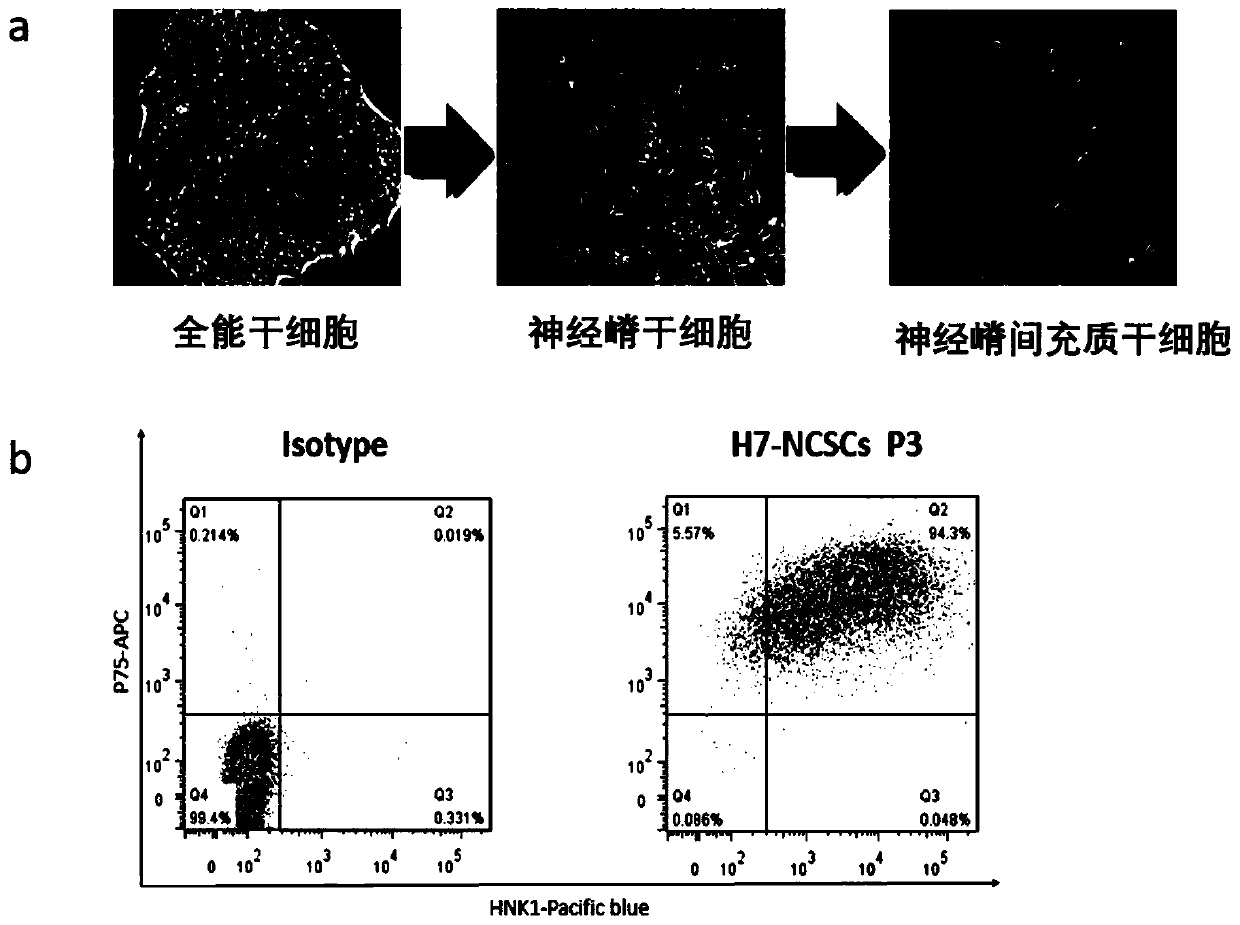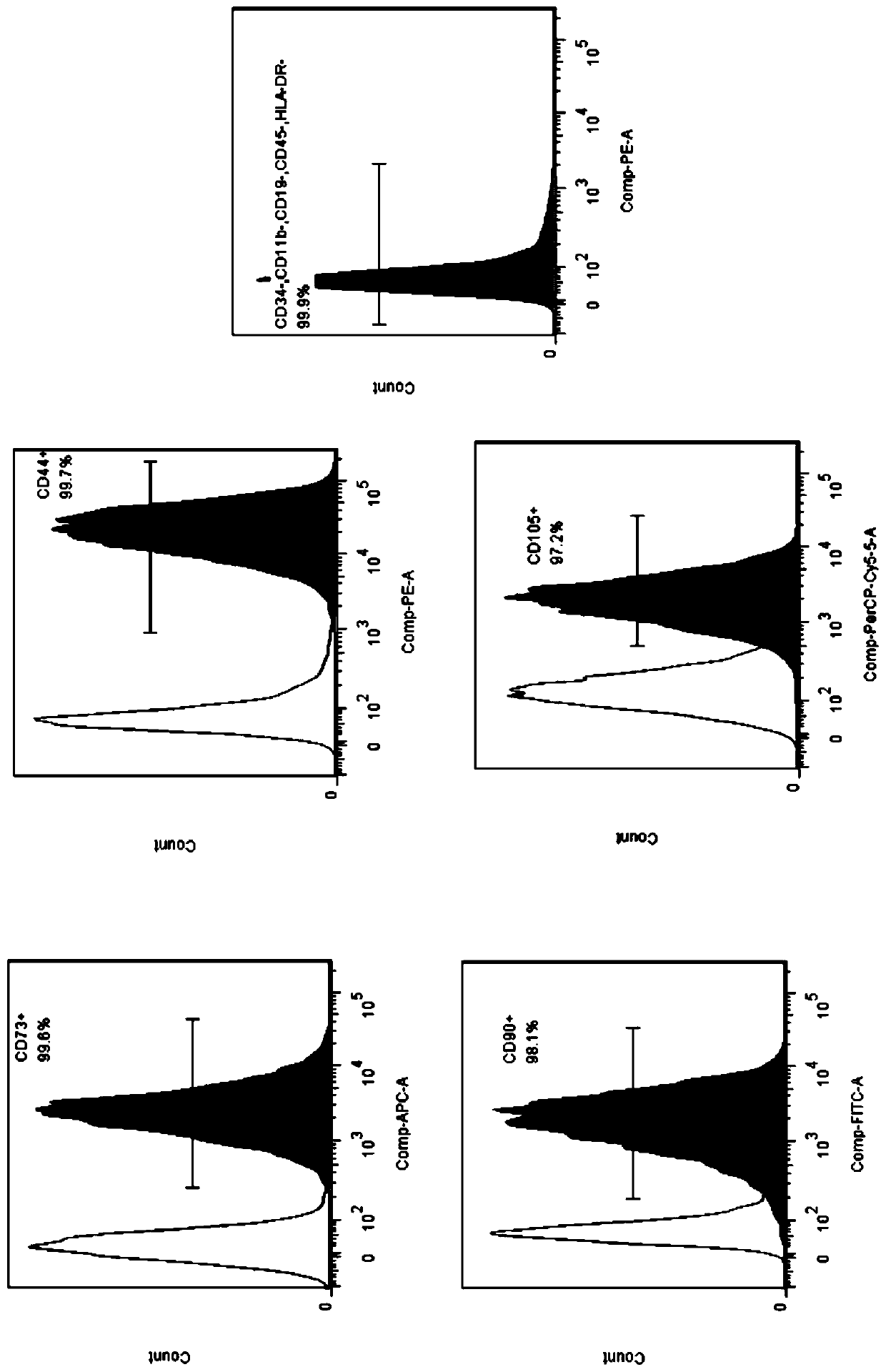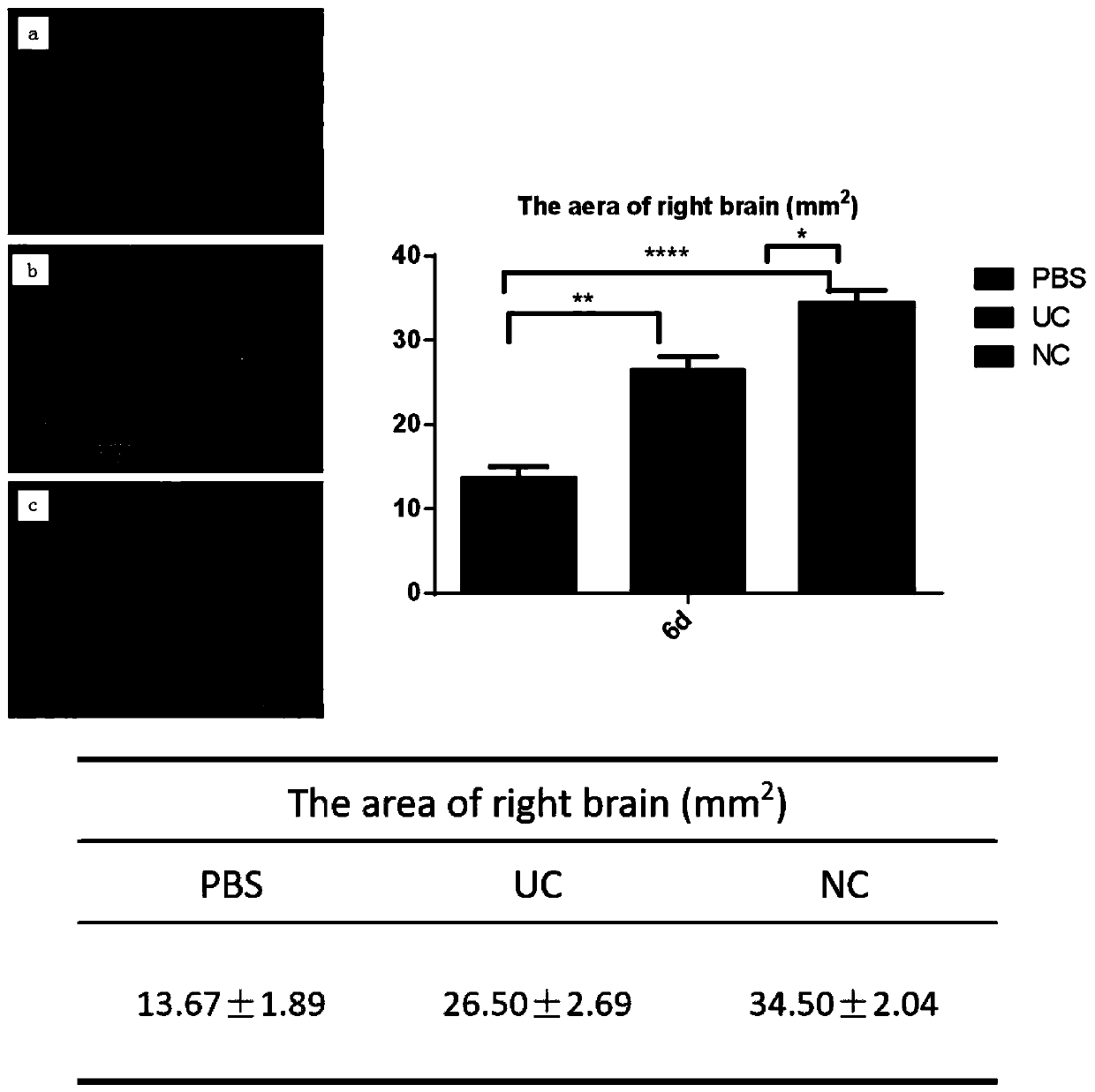Neural crest cell culture fluid, preparation method of neural crest mesenchymal stem cells and application of neural crest mesenchymal stem cells
A technology of stem cells and cell culture, applied in the field of stem cells and regenerative medicine, can solve the problems of long-term cell survival, heterogeneity and functional instability, and limit the wide application of MSCs in clinical practice
- Summary
- Abstract
- Description
- Claims
- Application Information
AI Technical Summary
Problems solved by technology
Method used
Image
Examples
Embodiment 1
[0044] Example 1 Induction and subculture of neural crest mesenchymal stem cells
[0045] (1) Human embryonic stem cells or IPS cells were cultured on the wall with StemPro (Gibco, A3349401) medium, and the medium was changed every day to maintain their undifferentiated state;
[0046] (2) Digested with Accutase (Gibco, A1110501) (placed at 37°C for 3 minutes) and passaged totipotent stem cells at a ratio of 1:10;
[0047] (3) When starting neural crest differentiation, the cells should be 6×10 per square centimeter 4 The density of cells was suspended and seeded on Geltrex (1:100, Gibco, A10480-02) coating plate;
[0048] (4) After the cells adhere to the wall, the culture medium is replaced with a neural crest cell culture medium, and the neural crest cell culture medium includes the following components: bovine serum albumin (Probumin) (20% (vol / vol)), 1% Penicillin / streptomycin, 1% L-alanyl-L-glutamine, 1% non-essential amino acids (MEM non-essential amino acids) , 0.1%...
Embodiment 2
[0054] 1. Differentiation culture of neural crest stem cells (NCSC):
[0055] Human embryonic stem cells (H7-hESC or H9-hESC) were 9.2×10 4 cells / cm 2 The density was inoculated in a Petri dish coated with Geltrex (1:100), added StemPro medium (Life Technologies) and cultivated in an incubator at 37°C with a carbon dioxide concentration of 5% for 24 hours. Then the culture medium in the culture dish was discarded, neural crest stem cell medium was added to induce differentiation, and the medium was changed every two days. When the fusion state was close to 80%, it was digested with Accutase (Gibco), passaged, and then 6×10 4 cells / cm 2 density, inoculated in Geltrex-coated Petri dishes. After continuous culture with neural crest stem cell medium for 15 days, the cell morphology has been clearly differentiated into neural crest stem cells. When the proliferation is close to 80% confluence, it is digested and passaged. Repeated passages in this way achieve the purpose of pur...
Embodiment 3
[0060] The establishment of embodiment 3 neonatal rat HIE model
[0061] According to the Rice method, the operation was carried out under strict aseptic conditions. Select 7-day-old neonatal SD rats, lie supine on a 37°C constant temperature board, anesthetize with 1% isoflurane inhalation under a ventilator, fix, expose the neck, separate and ligate the right common carotid artery (5-0 silk), 7-0 Suture the skin. After 2 hours, put it into a closed container, place it on a 37°C water bath, pass a mixed gas of 92% nitrogen and 8% oxygen into the closed container, and monitor the oxygen concentration in the container with a digital oxygen meter to make it Keep at 8% for 2 hours.
PUM
 Login to View More
Login to View More Abstract
Description
Claims
Application Information
 Login to View More
Login to View More - R&D
- Intellectual Property
- Life Sciences
- Materials
- Tech Scout
- Unparalleled Data Quality
- Higher Quality Content
- 60% Fewer Hallucinations
Browse by: Latest US Patents, China's latest patents, Technical Efficacy Thesaurus, Application Domain, Technology Topic, Popular Technical Reports.
© 2025 PatSnap. All rights reserved.Legal|Privacy policy|Modern Slavery Act Transparency Statement|Sitemap|About US| Contact US: help@patsnap.com



